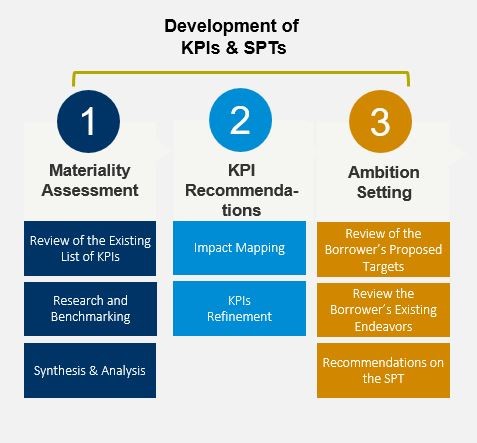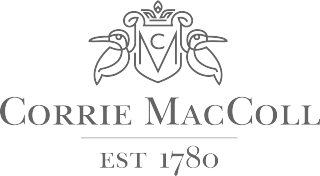Overview of Sustainability Linked Loan Framework

Introduction to the Sustainability Linked Loan Framework
Deutsche Bank has provided a USD 25 million sustainability-linked loan facility with a three-year tenor, to Corrie MacColl, a subsidiary of Halcyon Agri Corporation (“HAC”), to finance the company’s capex investments for its rubber plantations in Cameroon and Malaysia. The loan is structured such that it incentivises environmentally sustainable economic activities.
Sustainability linked loan facilities aim to facilitate and support environmentally and socially sustainable economic activities and growth and look to improve the borrower’s sustainability profile by aligning loan terms to the borrowers’ performance against the relevant predetermined sustainability performance targets (SPTs).
To support HAC in its sustainability efforts, an agreement was made between HAC and Deutsche Bank to set up a Sustainability Linked Loan Structure. An independent environmental and sustainability consulting firm, Environmental Resources Management (the External Consultant) has been appointed by Deutsche Bank to support the process of designing the respective sustainability-linked loan framework.
About ERM
ERM is a global consulting firm providing environmental, health, safety, risk consulting and sustainability related services. It employs more than 5,500 people in over 40 countries and territories working out of more than 160 offices. Their work ranges from the creation and implementation of group sustainability strategy for global corporations, to detailed technical audits on an individual site. ERM has worked with many of the Global Fortune 500 companies specifically in the business sectors of energy and natural resources, chemicals, power, infrastructure and technology, providing advice that has underpinned billions of dollars of investment decisions. ERM is a founding member of the World Business Council for Sustainable Development and was lead adviser on the technical supplement for the Task Force on Climate-Related Financial Disclosures (TCFD).
More information can be found at www.erm.com
I. Relationship to the Borrower’s Overall CSR Strategy
HAC has established a Sustainable Natural Rubber Supply Chain Policy (SNRSCP), which includes the following commitments:
- Working Conditions and Living Environment – to protect the rights of all supply chain stakeholders and create a positive work environment;
- Responsible Land Acquisition and Use – to promote a socially and environmentally responsible value chain and improve the likelihoods and economic viability of local communities, ensuring Free, Prior and Informed Consent (FPIC) methodology and guidelines are applied;
- Ecosystem Protection – to achieve zero-net deforestation and ensure responsible cultivation, harvesting and processing of natural rubber across the value chain;
- Ethics and Transparency – to prevent corruption across the value chain, practice free and fair competition and develop a transparent grievance mechanism process for all stakeholders;
- Good Agricultural Practices and Yield Improvement – to promote effectiveness and safe methods to maximize yields, including providing training, encouraging natural fertilizers and improving environmental conservation practices;
- Traceability – to actively facilitate the development of traceability across the supply chain; and
- Policy Implementation and Compliance – to ensure corruption-free and transparent implementation and reporting of the policy across the value chain.
HAC publicizes its sustainability development objectives and targets annually via its Annual Report. In 2020, the company aims to achieve zero non-compliance cases (i.e. grievance, corruption, whistleblowing and Environmental, Health & Safety (EHS)), zero workplace fatalities and to reduce total water consumption at processing sites and energy consumption by 5% and 3% respectively. It also plans to secure Forest Stewardship Council (FSC) certification for Hevecam’s Niété concession in Cameroon by the end of 2020.
HAC has developed an in-house management system, HeveaPRO, which encompasses quality standards, EHS, social responsibility and supply chain security. There has been good score improvement of the HeveaPRO certification for the Hévécam factory in Cameroon since the January 2018 audit.
The company was rated as the second most transparent natural rubber producing company globally under the Sustainability Policy Transparency Toolkit (SPOTT) programme (www.spott.org). HAC also regularly undergoes the EcoVadis supplier and Sustainalytics Environmental, Social & Governance (ESG) assessment whereby they have demonstrated improving sustainability ratings over the past five years. HAC aims to improve its future SPOTT, EcoVadis and Sustainalytics ratings on a per assessment basis.
The Borrowers have established an outgrower programme in Cameroon to promote partnerships with smallholders, which will provide additional food security and boost the income of participating people. Under this programme, around 27,000 ha of degraded and fallow land will be planted by 13,000 smallholders. Planting is anticipated to take place between 2020 and 2031, with initial tapping expected in 2025. It is expected that the programme will produce up to 39,000 tonnes of traceable and sustainable smallholder rubber annually.
The Key Performance Indicators (KPIs) established for the purpose of this sustainability linked loan facility aim to complement and enhance the Borrowers’ existing sustainability strategy and objectives. Therefore, suitable, meaningful and ambitious KPIs identified in HAC’s sustainability strategy are included, along with new KPIs, in the facility framework.
II. Target Setting – Measuring the Sustainability of the Borrowers
As outlined above the External Consultant, ERM was appointed by Deutsche Bank AG, Singapore Branch to determine the KPIs and set the SPTs that form the framework of this sustainability linked loan facility.
The three-stage approach followed by the External Consultant for selecting the KPIs and related SPTs is presented in Figure 1 below.
By means of a materiality assessment, the External Consultant identified the most important environmental and social considerations for both the Borrowers’ businesses and relevant stakeholders of the business. The assessment was carried out according to the following tasks:
- Review of HAC’s historic and current environmental and social performance (based on information supplied by HAC and information in the public domain), focusing on its assets in Cameroon and Malaysia, and an assessment of its management systems and targets relevant to the management of the key environmental and social issues;
- Review of performance indicators reported in relevant internationally recognized standards, guidelines and certifications; and
- Synthesis and analysis to establish company-specific environmental and social criteria.

During the KPI recommendation stage, KPIs evaluated as suitably meaningful, measurable, core to the Borrowers’ business and externally verifiable were identified via impact mapping.
The ambition setting stage consisted of reviewing the refined list of KPIs against the Borrowers’ and HAC’s current endeavours and ambition. An understanding of the Borrowers’ and HAC’s existing material environmental and social considerations and commitments helped us to determine where the company could enhance its performance and recommend the relevant SPTs to be achieved within this facility.
III. Reporting
The Borrowers are required to submit an annual report to the lender, which provides evidence of performance against each SPT.
IV. Review
The External Consultant will complete an independent review of the Borrowers’ and HAC’s sustainability performance against the SPTs established for the facility. This exercise will be carried out on an annual basis over the tenure of the loan.
Once reporting has been completed and external review has taken place, the Lender will evaluate the Borrowers’ and HAC’s performance against the SPTs based on the information provided by the External Consultant. The interest rate on the loan will be adjusted according to performance against SPTs using margin adjustments agreed between the Lender and the Borrowers.
Overview of Sustainability KPIs and SPTs
KPI
Sustainability Performance Target
HeveaPRO and LatexPRO Certification
To maintain or improve certification level and implement LatexPRO in the Sudcam factory.
SPOTT and Ecovadis Scoring
To achieve pre-determined score-threshold for all the criteria of the 2020 SPOTT assessment (especially for the categories related to High Conservation Value (HCV), High Carbon Stock (HCS) and impact assessments; soils, fire & greenhouse gas (GHG) emissions; and smallholders & suppliers). For the 2021 Ecovadis assessment, to increase HAC’s overall score to a pre-determined level.
FSC Certification
To secure FSC certification for Hevecam’s Niété concession.
Grievance Management
To resolve each reported grievance within a defined period, in accordance with the company’s documented procedures.
H&S Training Including Driver Safety Measures
To conduct H&S training, including defensive driving training, for all the employees and contractor personnel of the Cameroonian operations. To further check driving licenses of all driving employees and contractor personnel of the Cameroonian operations.
Workplace Fatality Reduction
HAC aims to achieve zero workplace fatalities in 2020.
Cultural Heritage Management
To develop and implement a cultural heritage management plan for the Cameroon plantations to protect tangible and intangible cultural heritage sites and assets. To monitor and report the implemented measures.
Community / Stakeholder Engagement Programme
- To implement all the Priority 1, 2 & 3 measures recommended by consulting NGOs in Cameroon;
- To develop and implement a stakeholder engagement plan for Malaysia, and establish procedures for communicating environmental and social issues, including risks and impacts; and
- To monitor and report the implemented measures.
Cameroon Outgrower Programme
To achieve pre-determined registered hectarage under the programme by pre-determined dates.
Zero Deforestation Commitment Monitoring
- To achieve zero confirmed cases of non-compliance with the zero deforestation principle; and
- To implement monitoring and verification tools to assess the plantations’ compliance with the ‘zero deforestation’ commitment. A range of tools can be used to monitor compliance including purchase control systems (such as Global Forest Watch), remote sensing technology or certification.
HCV Assessment, Management and Monitoring
- To complete an HCV Assessment for the Bissiang and Elogbatindi concessions (Hevecam), and for the Lebir and Ulu Nenggiri Estates (JFL), and to develop an HCV management and monitoring plan;
- To have the HCV assessment of the Sudcam plantation reviewed by an independent expert; and
- To implement all the measures recommended in the HCV Management and Monitoring Plan.
- To monitor, record and report the concessions’ environmental performance to demonstrate compliance with the requirements of the plan.
ESIA of the Plantations
To implement, monitor, record and report all the measures recommended in the respective Environmental and Social Management Plans.
Development of an Integrated Pest Management Plan & Reduction of Chemical Pesticide Use per ha
- To develop an Integrated Pest Management Plan; and
- Pre-determined reduction in chemical pesticides use per ha per year.
Energy Intensity Improvement
- To complete an energy audit to establish baseline and identify improvement opportunities; and
- To set, meet and maintain meaningful targets to improve the factory’s energy intensity (targets to be aligned with Deutsche Bank and ERM).
Water Use Intensity Improvement
- To complete a water audit to establish baseline and identify improvement opportunities; and
- To set, meet and maintain meaningful targets to improve the factory’s water use intensity (targets to be aligned with Deutsche Bank and ERM).
Effluent discharge reduction
- To investigate the feasibility of a zero effluent discharge process (Hevecam), and If feasible, to implement it; and
- To achieve zero effluent discharge (Sudcam).
